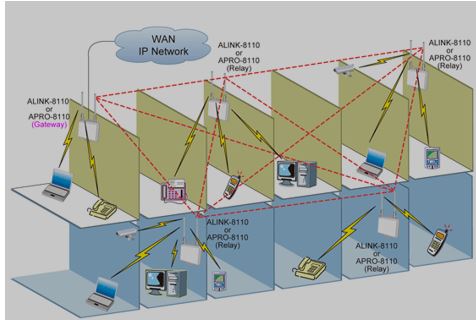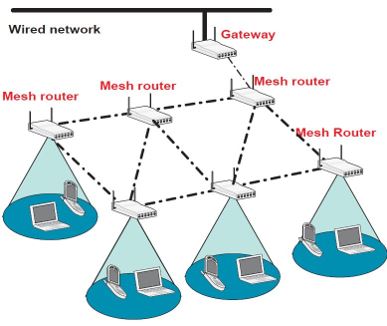|
April 2020
AutomatedBuildings.com
|
[an error occurred while processing this directive]
(Click
Message to Learn More)
|
Removing
the Umbilical Cord between Controllers and Sensors
This is only possible by
removing the
logic from the logic controllers and putting it into standard software
running on edge computing. And that is only possible by removing the
umbilical cord between controllers and sensors, the wires that restrict
them from taking more and better inputs.
|

Phillip
Kopp CEO
Conectric Networks
Part 2 of 2
Part
1 0f 2
|
In
the first part of our flexible building mini-series, we
explored how wireless digital control is the core to establishing
operational flexibility over a building's lifecycle, and why this leads
to a more comfortable, efficient and functional building environment.
Today we look at the formula for a truly open, low cost and future
proof building.
The next order of building flexibility is to remove the specialized programming tools and compilers that
exist in today’s digital PLC’s which lock your building into a state of
inflexibility. Instead, we look at a roadmap for buildings with control
sequences programmed in standard software languages like JavaScript or
.Net using open tools and completely separating hardware from software.
Why are controls sequences compiled with
proprietary tools into logic controllers in the first place?
Technically speaking, direct digital controllers (DDC) and PLC’s do not
have very powerful onboard computers. They run on the firmware that has
to be programmed to each controller individually. A static program that
can’t be changed once is “flashed” into the hardware. If you want to
change the control sequence or add a new sensor, you have to reprogram
the firmware in a specialty software with line drawings to reflect the
changes in each controller. That software will only compile and run on
the chip that is specific to that controller and thus, the only way to
program it is using the specialized tool for that vendor. While this
may be fine for operational day one, it has many adverse effects after
that. Including limiting the number of people that can work on
that building in the future, to those that have the right programming
software, those trained to use that software, and a high cost to change
sequences or add sensors—making the building very inflexible. There are
solutions to this, such as the use of the Sedona
framework; however, these are mostly band-aids, layered on top of
existing proprietary controls and don’t get to the root of the problem.
These are special programs limited to building automation, meaning
there is a small labor pool to work on these controllers and limited
transferable skills between building automation and other industries.
Let's
look at a real-world example. Something as simple as adding occupancy
sensors to existing office building HVAC systems will have a dramatic
impact on energy efficiency. Yet, it cannot be done to existing HVAC
systems because that would require wiring sensors to controllers and
reprogramming controllers individually. Running wire will be very
expensive. Few contractors (i.e. those affiliated with the controller
vendor) have access to the software or know how to use it. This limited
resource (in many cases territorial, meaning there is only one per
city) creates a monopolistic business environment. Again, driving costs
to the point where ROI is unachievable. Yet, this is the precise reason
why the current design remains; the system is to protect monopolistic
and territorial business practices, which is bad for buildings, owners,
operators, occupants and even our environment. The advent of open
protocols and projects like BACnet or Haystack will not change this
scenario as long as controllers must be programmed with compiled
software on proprietary programming toolchains, using specialized
vendor software that only they control and train people how to use.
Under the current system, the cost of the upgrade will easily outweigh
ROI, and we see the result, most buildings are 50% inefficient or even
more.
Take the control sequences out of the
controllers and into more powerful edge servers that run software that
can be worked on and developed in standard languages opening the door
for a vast resource pool to work on building automation, the entire
global software developer community! Imagine what having access to the
global software developer brain trust and market competition would do
not only for the quality of the control algorithms but to the cost of
developing and implementing them?
A good
comparison might be the early days of the internet when you had to pay
a website developer $10,000's or $100,000's to create each custom
website individually. A costly and time-consuming exercise with a
limited number of specialized resources, much like the BAS controller
programming of today. Fast forward about 15 years, and platforms like
Wordpress standardize beautiful and functional template-based websites
on the order of $100's of dollars, maybe 10% of the initial cost, or
Wix that allows you to build your site for free.
A website
like this would have cost $100,000's to develop in 2008, but maybe just
$100's today.
Why hasn't this happened in building automation
yet? There are a plethora of low cost, reliable, "dumb" i/o controllers
on the market that follow instructions provided by a server. SCADA
systems typically are designed in industrial factories. So why not in
buildings? It is not due to a lack of available hardware.
The answer is not just poor business practices,
but partly also a technical one. Wireless technology finally permits
removing the umbilical cord between controllers and sensors, the wires
that restrict them from taking more and better inputs. The reason why
logic must exist in the controller today (making it exceedingly
difficult to change and adapt in the future) is because the inputs are
attached to them. If you remove the inputs from the controller and you
run everything through software, there become zero reasons for
programming logic into controllers, and the building is free from
inflexibility! Wireless sensor inputs placed where needed and updated
as building use and tenant improvements change over time. Those inputs
feed into the smart software that operates advanced control sequences,
intelligent algorithms and even artificial intelligence applications
that can be worked on by standard software developers over the life of
the building. Wireless technology makes it possible to use common and
open languages like Node JavaScript developer kits. Provided license
free by companies like real-time mesh wireless technology provider Conectric Networks, and combined with open source
frameworks like Node-RED
enables a completely free and open building control platform taking
buildings into the modern software age of Wordpress and Wix
(disclaimer, I am the co-founder and CEO of Conectric Networks).
With wireless
networks, "dumb" slave controllers, programming control sequences in a
completely 100% digital environment using standardized software
languages with tools that any software engineer on the planet has
access to and knows how to use, we can completely revolutionize how our
buildings work. They will be fully programmable, flexible, efficient,
adaptive and then plugged into infinite ecosystems of new software,
tools, energy systems, human interfaces, smart algorithms and even
artificial intelligence (AI) programs. We can connect brains to
buildings. More importantly, they will be easy to service and maintain
over time, having not only a far lower cost to build, but also to
operate. The ROI is virtually infinite when comparing to the existing
wired approach today.
The final question remains. If it were so easy,
why isn't everyone just doing it? Putting all else aside, there are
always tradeoffs. This is as true with technology as it is with
engineering, business practices and even social balance. There
have been dramatic improvements in wireless technology; the truth is
that high throughput and high bandwidth communications like what we
have described, such as WiFi or Cellular require a lot of power to keep
a constant connection, or only transmit short distances and therefore
also require wires… sort of defeating the whole purpose of the
conversation.

Existing WiFi networks are short-range, power-hungry and demanding to manage securely.

Advanced
mesh networks allow real-time battery operated devices.
Wireless technologies that don't require wires
and can run on batteries or energy harvesting communicate infrequently
and unreliably, making them perform poorly for the kind of expectations
we have for latency and operation in building systems. Compared to
this, wired systems just work better. Fortunately, there are companies
like our company Conectric Networks, working on what I call "hybrid
mesh systems." Hybrid mesh systems leverage both constant powered and
battery-powered nodes to provide the performance of wired networks,
with the flexibility of wireless ones and enable the Jetsons building
of the future. Thanks to editorial platforms like automatedbuildings.com
giving myself and others from companies like Lynxspring, EnOcean, LoRa
Alliance, Aruba Networks the opportunity to write articles like this,
we can share our work and the great promise it brings to solving the
inflexible building challenge.
About
the Author
Phillip Kopp is a technology co-founder who fell
into the world of building automation and energy efficiency over 20
years ago starting the first totally wireless RF sensor company for
hotel guestroom automation, sold to the Somfy Group in 2009. He has
since built or sold three other companies in financial technology and
SaaS and has contributed to over 15 US Patents. Phillip is currently
the CEO of Conectric Networks, whose goal is to install billions of wireless
sensors into buildings, AI enabling to develop a massive virtual grid.
Reducing 20% of global energy consumption and paving the way to a
safer, more productive and healthier future.
footer
[an error occurred while processing this directive]
[Click Banner To Learn More]
[Home Page] [The
Automator] [About] [Subscribe
] [Contact
Us]
